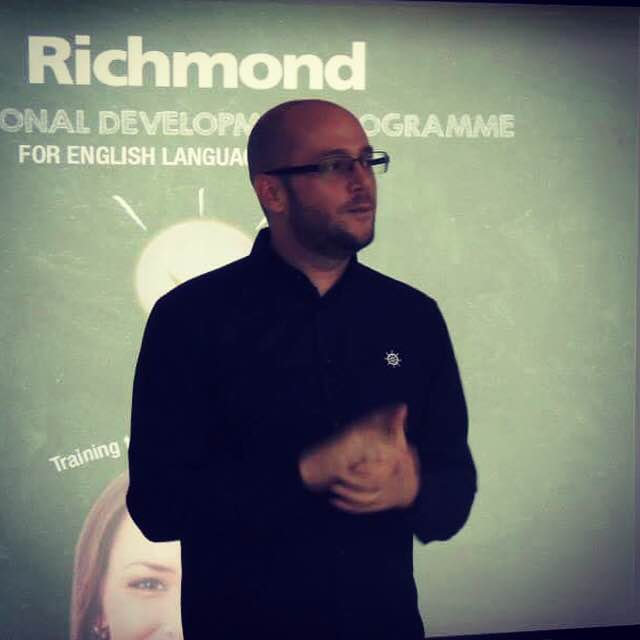Pendulum swings, babies and bathwater: an appeal for common sense
I recently came across a blog post by Cathy Moore titled ‘How to respond to learning styles believers’, in which she talks about the perils of debunking theories to which people have become quite accustomed and attached to over the years, but which have been shown not to be based on evidence – in this case the theory related to learning styles. I posted a link to the article on Facebook and from the ensuing response and comments, it’s clear to see just how right she is in terms of the reactions it produces. She then advises to proceed with caution when speaking to staunch believers of the theory.
The theory states that if you have, say, a visual learner, then they will learn better with the use of visuals, bright colours, maps, etc. The problem is, there is no conclusive evidence to show this is really true. This is no new phenomenon. In 2014, at the IATEFL conference in Harrogate, I was fortunate enough to attend Russell Mayne’s talk on pseudo-science in ELT. In it, he basically tore apart the idea of learning styles (among other ideas), showing how despite the fact that they have been almost omnipresent in ELT, the whole idea isn’t actually based on any conclusive evidence . This struck a real chord with me, as it’s something I’d been reading a lot about myself through the work of Daniel Willingham, Professor of Psychology at the University of Virginia. He has long argued the case for a bit of common sense when it comes to learning styles and how much value we place on them in teaching.
The idea that different learners learn in different ways feels intuitively right of course, but it’s one giant leap to go from ‘that sounds like a good idea’ to stating unequivocally that ‘a visual learner needs to see things’, the part of the theory for which there is no conclusive evidence. In fact, it’s not just that there isn’t enough evidence to prove the theory, the fact is that there haven’t even been enough studies to attempt to do so. In 2008, Pashler, McDaniel, Rohrer and Bjork carried out a meta-study into the effectiveness of research into learning styles theories, and found that:
… at present, there is no adequate evidence base to justify incorporating learning-styles assessments into general educational practice.
Yet the degree to which a belief in the effectiveness of learning styles pervades education is phenomenal. Some schools even go as far as to print special cards for their students, which have a summary of that child’s preferred learning styles (Beadle, 2011).
An appeal for common sense
So, if there is no evidence for the fact that learners with a particular ‘style’ will learn best in a particular way, should we dismiss the idea altogether? I would argue that to do so is to take just as giant a leap as to blindly believe the whole theory. Since Russell’s talk, there has been a sweeping move within ELT to dismiss such ideas and banish them from teacher training courses. Even mentioning the idea of learning styles has become almost taboo in some circles. However, it’s worth remembering the facts here. All we know is that there is no evidence that, for example, learners who like visuals will learn better if they see everything in colourful charts. That doesn’t mean that different learners don’t learn in different ways. Or that providing a variety of stimuli and input won’t make for more motivated, engaged learners. In fact, the authors of the above-mentioned meta study themselves go on to provide the following afterthought:
However, given the lack of methodologically sound studies of learning styles, it would be an error to conclude that all … have been found wanting; many have simply not been tested at all.
If we are to take a fully-informed view then, we should conclude that the jury is still out. While we shouldn’t set unchallenged store by learning styles theories, we shouldn’t throw the baby out with the bathwater, either.
In fact this is how I (and my colleagues) have always dealt with the topic on CELTA courses: this is the theory, it’s up to you to decide how useful it is, but basically it’s a good idea to vary what you do in the classroom.
Fads and Contra-fads
The idea of the ‘fad’ and subsequent ‘contra-fad’ is no recent phenomenon in ELT. Aside from the rush to adopt learning styles theories (and the current rush to reject them), we can see examples throughout history: Grammar-Translation and the Direct Method; Behaviourism and the Humanistic, Organic approaches; Structural syllabuses and the Functional-Notional syllabus; PPP and Task-based Learning; No translation and using translation; Reducing affective filters and Demand High; embracing technology and relying on technology too heavily, to name a few examples.
This last dichotomy, for and against technology, is perhaps the largest, most pervasive to affect ELT in recent years. A more recent manifestation of this trend is the rise of Solutionism in ELT, which I wrote about in a post on this site earlier in the year. In very basic terms, this involves framing everything as a simple problem in order to provide a tangible solution. Evgeny Morozov (2013) defines it as:
Recasting all complex social situations either as neatly defined problems with definite, computable solutions or as transparent and self-evident processes that can be easily optimized.
This has been the main driving force behind the rise of many of the huge tech start-ups in recent years, such is in the area of fitness tracking, where huge amounts of data are collected and analysed in order to provide ‘fixes’ or practical, short-term solutions. Solutionism has made an entrance into the world of ELT in many ways. The creation of ‘game-like’ language learning apps is one, though perhaps a more worrying trend is the massive, whole-scale movement by some publishers towards technology, big data, and the ‘fixes’ it provides. This has been welcomed by many who have long viewed the publishing industry as reluctant to adopt new technologies. In some cases this change has been sweeping, with many at the top hailing the death of print media and adopting a headlong charge towards digital platforms. This is a real change that has led to a massive, industry-wide shake up, and in some cases resulted in many people losing their jobs.
While it could be (and often is) argued that this is simply the result of an evolving market, I find it a little worrying as the rush towards technology and digital media by such powerful bodies reflects the rush towards fads in ELT in so many ways. What if this turns out to be a ‘fad’, like so many that have gone before? What if students, teachers and other stakeholders realise that they actually quite like books, and while they’re keen to embrace technology, feel that it works best alongside, not as a replacement for traditional print media?
What should we do?
As people who work in the ELT industry, whatever our ‘level’, I think it’s fundamentally important for us to be aware of fads and contra-fads. It’s our job to embrace new ideas, of course, but we should also be the ones who provide the ultimate test as to how far something should be embraced. The thing I’ve always loved about our industry is that it attracts so much innovation, regardless of resources available or experience. This is something which should be actively encouraged and maintained, but we also need to remember that new ideas are just ideas. They need rigorous testing and evaluation before they can be taken as given. Likewise, backlash against common ideas and practices needs to face the same rigour. To take (or criticise) a new idea or practice at face value isn’t just not useful, it can have real consequences, and it’s only by applying a common-sense filter that we can take what’s genuinely useful in order to build a better industry all round.
References/Further reading
This post is adapted from an article I wrote for In-English Digital 10, The fad and contra-fad in ELT: an appeal for common sense available here: https://issuu.com/britishcouncilportugal/docs/ied10_s
Beadle, P., 2011 Bad Education: The Guardian Columns Crown House Publishing
Mayne, R 2014 A guide to pseudo-science in English language teaching
Available at: https://iatefl.britishcouncil.org/2014/sessions/2014-04-02/guide-pseudo-science-english-language-teaching [Accessed 12 March 2015].
Moore, C. How to respond to learning-style believers Cathy Moore [blog] 15 June. Available at: <https://blog.cathy-moore.com/2015/06/how-to-respond-to-learning-style-believers/> Accessed 19 June 2015].
Morozov, E. 2013 To Save Everything, Click Here: Technology, Solutionism and the Urge to Fix Problems that Don’t Exist Penguin
Willingham, D Do Visual, Auditory, and Kinesthetic Learners Need Visual, Auditory, and Kinesthetic Instruction? [online] Available at: https://www.aft.org/ae/summer2005/willingham [Accessed 12 March 2015].






